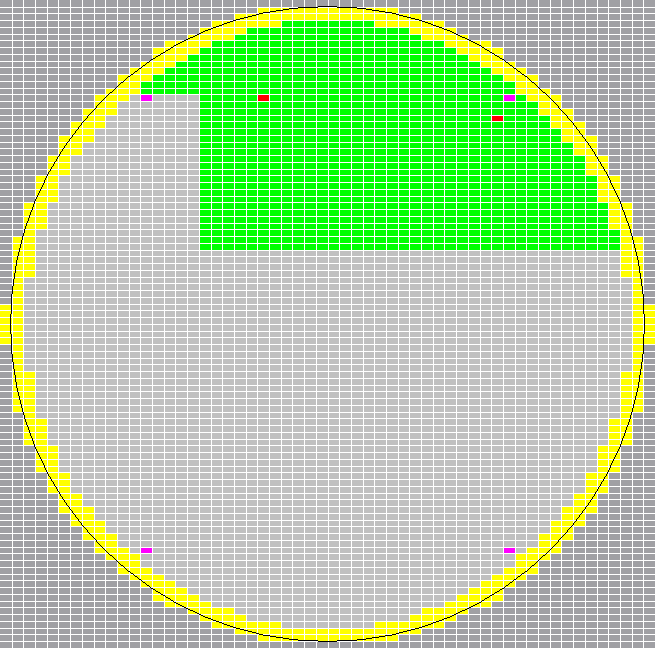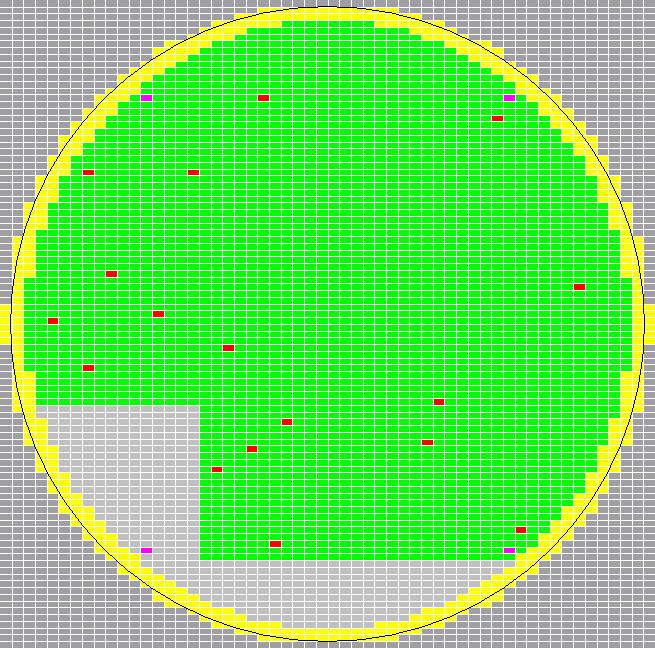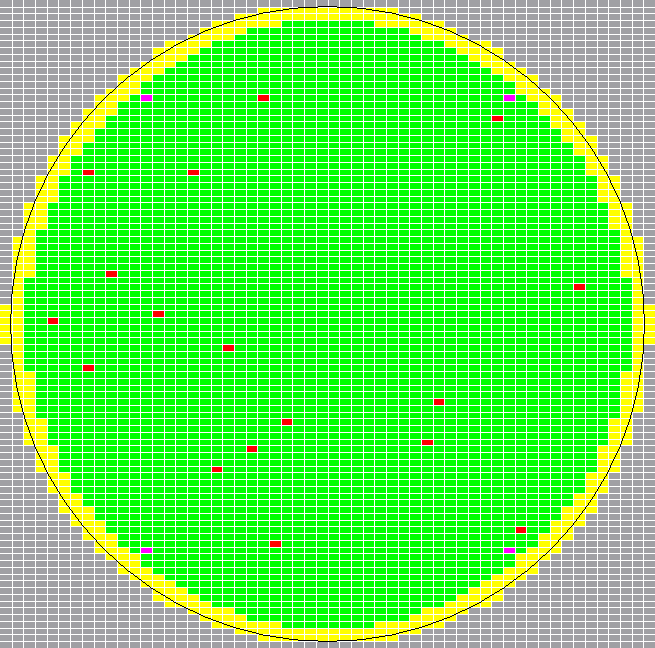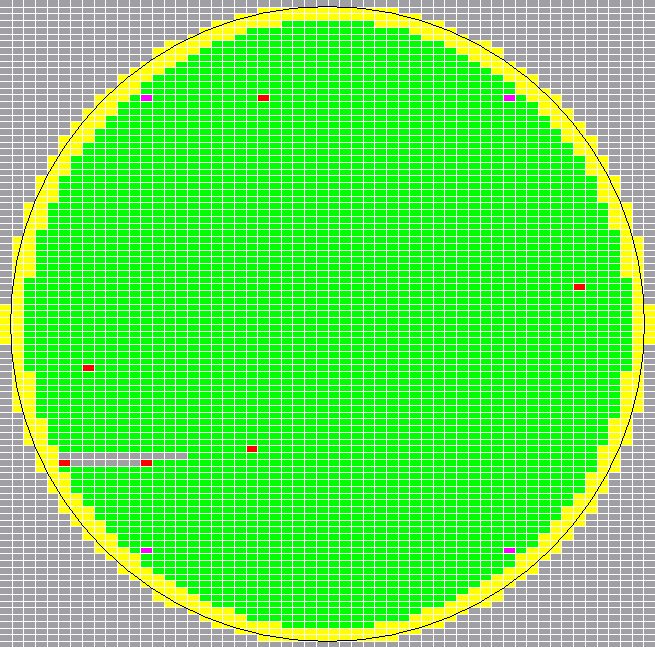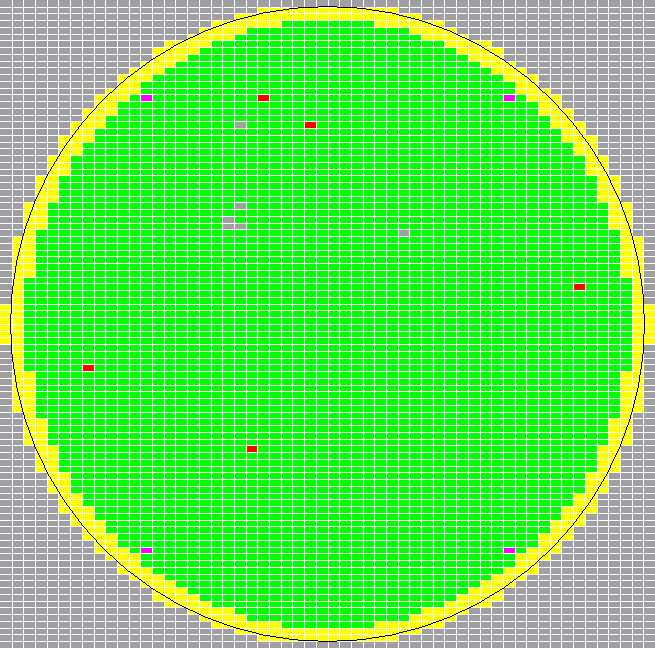This interface provide functionalities of the wafer map sorting.
The sorter collects the dice and put them to the nearest proper position onto the realtime wafer map. And in the final sorting, it optimizes the dice array globally, filtering the noisy or duplicated dices, then output the final sorted wafer map. The template wafer map must be specified before sorting, to make the sorter understand well the organization of the wafer.
To use this interface, you should create a LWaferSorter object.
Example Code
C++
ILWaferSorterPtr sorter = LWaferSorter::Create();
sorter->Template = templateMap;
for (int i = 0; i < count; ++i) {
}
for (int i = 0; i < count; ++i) {
}
ILWaferMapPtr realtimeMap;
if (err != LPVErrorCode::LPVNoError) return;
ILWaferMapPtr sortedMap;
err = sorter->Sort(&sortedMap);
if (err != LPVErrorCode::LPVNoError) return;
LPVErrorCode
This enumeration represents the type of a LPV function error.
Definition: LPVCore.idl:530
@ LPWBinPass
Definition: LPWWaferMap.idl:128
@ LPWBinRef
Definition: LPWWaferMap.idl:101
C#
LWaferSorter sorter = new LWaferSorter();
sorter.Template = templateMap;
for (int i = 0; i < count; ++i) {
}
for (int i = 0; i < count; ++i) {
}
LWaferMap realtimeMap;
LWaferMap sortedMap;
err = sorter.Sort(out sortedMap);
COM
ILWaferSorterPtr sorter = LWaferSorter::Create();
sorter->Template = templateMap;
for (int i = 0; i < count; ++i) {
}
for (int i = 0; i < count; ++i) {
}
ILWaferMapPtr realtimeMap;
if (err != LPVErrorCode::LPVNoError) return;
ILWaferMapPtr sortedMap;
err = sorter->Sort(&sortedMap);
if (err != LPVErrorCode::LPVNoError) return;

 Public Member Functions inherited from ILObject
Public Member Functions inherited from ILObject